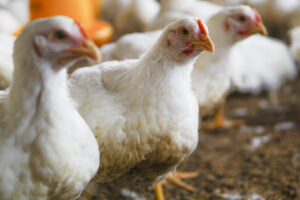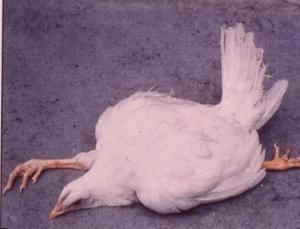
Understanding Marek’s Disease: A Comprehensive Overview Introduction Marek’s Disease (MD)


Marek’s Disease (MD) is a highly contagious viral illness affecting poultry, particularly chickens. First identified in the early 20th century by József Marek, this disease has had significant implications for the poultry industry globally. Despite extensive research and advancements in vaccination, Marek’s Disease remains a concern for poultry farmers and veterinarians.
József Marek, an Austrian-Hungarian veterinarian, documented the disease’s first signs in chickens in the early 1900s. His research laid the foundation for understanding the pathology and transmission of the disease.
Over the years, researchers have made significant strides in understanding Marek’s Disease. Studies on its etiology, viral characteristics, transmission modes, and host immune responses have contributed to devising effective control measures.
MDV, a type of Herpesvirus, primarily belongs to the family Herpesviridae. This virus is categorized into three serotypes: MDV-1 (Gallid herpesvirus 2), MDV-2 (Gallid herpesvirus 3), and MDV-3 (Meleagrid herpesvirus 1).
MDV primarily spreads through airborne particles contaminated with infected feather follicle dander and dust. Additionally, contaminated surfaces and equipment may serve as potential sources of transmission.
The virus enters the host through the respiratory tract, infecting T-lymphocytes and rapidly disseminating to various organs. Clinical symptoms include neurological signs, paralysis, lymphomas, and ocular irregularities.
Marek’s Disease has a worldwide distribution and significantly impacts the poultry industry. Developing countries often face substantial economic losses due to decreased productivity and increased mortality rates.
Several factors influence the susceptibility of chickens to MDV, including breed, age, immune status, and environmental stressors. Highly susceptible breeds are more prone to severe manifestations of the disease.
Various laboratory methods, including serological assays, PCR (Polymerase Chain Reaction), histopathology, and virus isolation, aid in diagnosing Disease. These methods facilitate timely detection and appropriate management strategies.
Despite advancements in diagnostic tools, Marek’s Disease diagnosis presents challenges due to its latency period, varied clinical presentations, and potential co-infections with other poultry pathogens.
Vaccination remains the cornerstone in controlling Disease. Commercial vaccines, including live attenuated and vector-based vaccines, have been pivotal in reducing disease incidence and severity.
Implementing strict biosecurity protocols, such as disinfection, quarantine, and controlled flock movements, plays a crucial role in preventing MDV spread within and between poultry farms.
Developing genetically resistant chicken lines through selective breeding programs offers a promising avenue to enhance natural resistance to Marek’s Disease.
Supportive therapies, including nutritional support, minimizing stress factors, and proper environmental management, aid in managing infected flocks and reducing disease severity.
Ongoing research on antiviral drugs and immune modulators aims to develop effective treatments targeting MDV replication and pathogenesis.
Advancements in molecular biology, genomics, and immunology continue to shape Marek’s Disease research. Novel vaccination strategies and understanding host-pathogen interactions are areas of ongoing investigation.
Addressing vaccine efficacy, evolving MDV strains and the complex host immune response are critical challenges that demand further research and innovative solutions.
Marek’s Disease remains a significant concern in the poultry industry, necessitating continuous research efforts and the development of multifaceted control strategies. Collaborative endeavors between researchers, veterinarians, and poultry stakeholders are vital in mitigating the impact of this widespread poultry disease.
This comprehensive article delves into various aspects of Marek’s Disease, providing insights into its history, causative agent, epidemiology, diagnosis, prevention, treatment approaches, and future directions for research.




©2021-2024
HKR POULTRY AGENCY & FARMS PRIVATE. LIMITED.
All Rights Reserved.
2 Responses
It’s amazing designed for me to have a website, which is beneficial in favor of
my experience. thanks admin